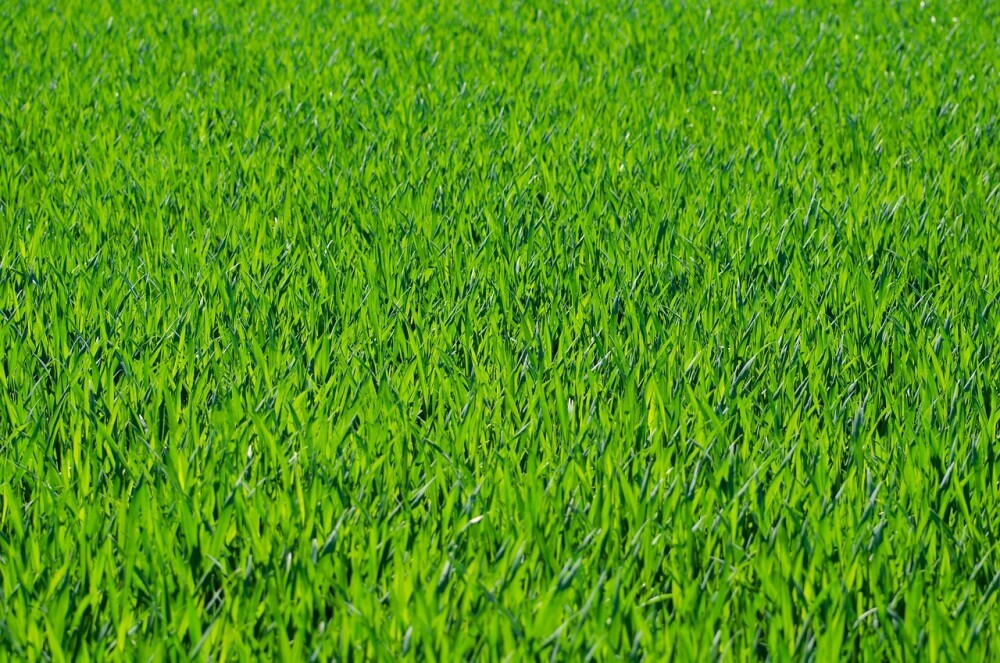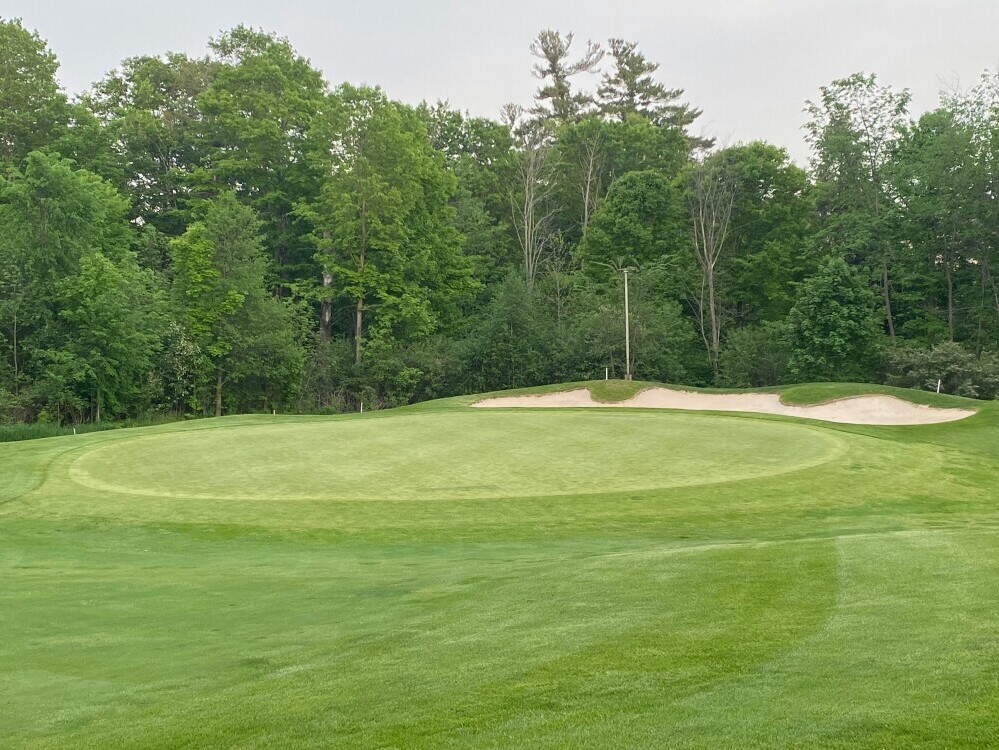Adapting To Different Grass Types And Conditions On The Golf Course


Fore! Quick note: a few links here are affiliate links. If you snag gear through them, I earn a small commission — no extra strokes added to your game.
When you’re out on the golf course, it’s not just about your swing or club choice. The grass beneath your feet plays a big role in how your game shapes up. Golf courses aren’t a one-size-fits-all when it comes to their greens. Whether you’re treading on Bermuda, Bentgrass, Zoysia, or Ryegrass, each brings its own quirks. If you’re confused, don’t worry. The golf viking, as always, has you covered.
Let’s chat about Bermuda grass. This one’s the go-to in warm climates. Think of it as the sun-loving friend. Bermuda is hardy, thrives in the heat, and gives a fast roll. But watch out when things cool down. It’s not as sprightly when the temperatures dip, so your game might need a tweak if it gets a little bit colder.
Now, if you’re on a cooler track, Bentgrass is your guy. It’s all about precision here. Bentgrass is smooth and often found in those neat, tightly mowed putting greens. It needs a bit more pampering, though, so greenskeepers are always busy keeping it pristine. Expect a true roll here, but ball speed can surprise you if you’re not paying attention.
Zoysia grass can be quite the charmer with its versatility. You can spot it in both hot and transitional zones. It’s got that cushiony feel to it, almost like it’s springy under the feet, making for a friendly lie and solid shots. But during colder weather, it doesn’t hibernate entirely, offering a pretty consistent playing experience.
And then there’s Ryegrass, often seen in cooler or transitional regions. Ryegrass is like that reliable buddy who stays chill no matter what. It’s overseeded on many courses during winter months to keep things green and playable. Its durability makes it a fan-favorite for courses dealing with foot traffic and harsh conditions.
Recognizing the type of grass is key because it influences how you play. Knowing its quirks can let you adjust your strategy, whether you’re looking to avoid a fast roll or anticipate slower greens. So, next time you step on a course, take a moment to check out the grass type because it’ll give you insights into how the ball will behave, and, ultimately, how you approach your game.
Different grass types affect ball roll and shot selection. Check out Short Game Mastery to learn techniques for precise putting and chipping on various surfaces.

The Impact of Weather Conditions on Your Game
Weather conditions are as much a part of golf as your set of clubs. You’re out there, swinging away, and the sky decides to put its spin on things. Rain, sun, or wind can change everything about how a course plays, no matter the grass type. You can’t control the weather, but you can gain some insight on how to maximize your play even in bad conditions.
Rain might turn your round into a chess game. The ground’s soaking it up, and that changes the ball’s behavior. Your once-perfect game plan needs a swift adjustment because wet grounds can slow things down. A little dampness might ease the greens, softening them for approach shots. But puddles on the fairway? That’s territory where you adjust your swing and maybe your grip to power through.
On a sunny day, courses bask in the glory, but they dry out too. That sun’s departure can lead to faster rolling greens and firmer fairways. This means recalibrating your putting technique and club selection. Plus, dry grass lets the ball run further once it lands, so watch your power! Be mindful of fast greens.
And then there’s the ‰, that wild card. It’s the unseen hand swaying your game’s rhythm. A strong gust? It calls for imagination as much as it does skill. Playing with or against the wind means you’re judging strength and direction. A well-placed shot accounts for airflow, letting gravity do its work to bring the ball back to you. Real mastery shows when you’ve figured out how to let the wind be an ally, not an opponent.
On top of that, let’s not forget seasonal shifts. Over time, the course changes with the seasons, affecting game outcomes. Late fall might have you dealing with firmer, unyielding conditions, while spring introduces new growth and uneven patches as grass awakens from dormancy.
Weather motivates you to give each round your total attention, reading changes in the environment and readying your inner strategist to adapt your style. Use these adjustments, and you might turn unpredictable elements into part of the challenge you thrive in.
Course management becomes more critical under varying conditions. Our How to Break 90 in Golf guide offers strategies for playing smart and avoiding unnecessary risks.

Strategies for Playing on Varied Green Terrains
Every golf course comes with its own set of challenges, and the terrain is a big part of the puzzle. From smooth fairways to the rugged rough, bunkers, and putting greens, each terrain asks you to bring a slightly different approach to your game.
Fairways are where you want your tee shot to settle, offering a safe and pleasant ride to the greens. The secret here? Aim for consistency and precision. When you nail that, you’ll have a clear path forward, avoiding those tricky spots that make you sweat. Staying on the fairway can keep you from having to save par down the line.
But the rough? Now that’s where things get interesting. Once you’re in, expect resistance as taller grass grabs your club. Solution? A tighter grip and maybe a choice of a higher-launch club. Plan for a more robust follow-through to muscle your way back on track. Knowing how to get out of the rough can save you strokes on the scorecard.
Then there are bunkers—golf’s own sandbox, where the rules of play change. Here, a soft touch is essential. Open the clubface, widen your stance, and hit the sand behind the ball. Your goal is a clean escape, not distance. You want to land your ball softly onto the green.
And when it comes to playing on the green, understanding the slope and grain is crucial. These elements can drastically change how the ball rolls towards the hole. Pay close attention when reading the green, using your putter to gauge speed and direction accurately. Keep in mind the speed of the greens and the type of grass you’re dealing with.
Each course presents a new landscape to conquer, so always be ready to adjust and rethink your approach based on the terrain. Your game improves significantly with practice and learning from each terrain challenge you tackle on the course.
Club selection can change depending on turf and weather. Learn more in Best Golf Clubs for Backspin to pick clubs that perform consistently across conditions.

Mastering the Greens: Putting on Different Grass Types
Putting can make or break your game, and the type of grass on the greens plays a huge role here. Ever find yourself wondering why one putt seemed to zip while another barely made it halfway to the hole? It’s all about understanding the grass.
Let’s talk Bermuda greens. This grass is known for its grain, which can push your ball off its line. On these greens, pay attention to the direction the grass is growing. Downhill and with the grain means faster putts, while against the grain can slow you right down. With faster greens you need to be careful on how hard you hit the ball, otherwise you can roll right off the green.
Bentgrass offers a different challenge. It’s usually kept short, giving a smooth and fast surface, perfect for those precision putts. Yet, beware of unexpected rolls. Keep your eye on any subtle slopes, as they can sneakily alter the ball’s path.
Each type of grass requires a unique approach. You might find that a slightly firmer stroke works wonders on Bermuda, especially against the grain. On Bentgrass, a delicate touch, paired with a keen eye for the slopes, can make all the difference.
Don’t forget about practice greens. They’re your testing ground to get a feel for the day’s conditions. Spend time here, adjusting your play style not only to the grass type but to how it’s playing at that moment. Get used to how the greens play to give yourself an idea of how to approach the course.
And finally, remember that grasses change through the year. A green that plays one way in spring may be different come August. Each round can be a fresh learning opportunity, so keep adapting your strategy to stay ahead. The course you played in the spring may play differently in the fall. Let’s wrap up with some final tips on handling each type of course.
Using forgiving equipment can ease the challenge of difficult turf. Explore our recommendations in The Most Forgiving Drivers for clubs that provide confidence on uneven lies.

Proven Tips for Elevating Your Golf Game
Boosting your golf game isn’t only about skills or having the newest gear. It’s about understanding and adapting to every factor the course throws at you. Sure, knowing about grass types and weather conditions helps, but there’s more to the equation.
One huge asset is the course knowledge you can pick up just by paying attention. Chat with other golfers or even catch a word with the greenskeepers. They know the ins and outs of the course conditions and can give you insights into the challenges you might face. The more you know about the layout of the course the more you can place your ball in the best position.
Technology’s your friend, too. There are apps and gadgets galore, dedicated to helping you analyze your game. From tracking ball path to reading greens, there’s a digital tool for just about everything now. Make these gadgets a part of your toolkit, and you’ll have an edge in understanding each course’s quirks.
Mental toughness can’t be overlooked. Golf is as much about the mind as it is about technique. Keep your cool when faced with unexpected challenges. Train yourself to adapt, seeing difficulty as a fresh opportunity to improve. Keep a calm and relaxed manner on the course to stay consistent.
Lastly, practice makes perfect. Spend time on various terrains, in different weather conditions, to prepare yourself for whatever comes your way. The more you expose yourself to differing situations, the more adept you’ll become at tackling them efficiently, ensuring you’re ready for any course you visit. I’ll see you out on the golf course, golf nerds.


